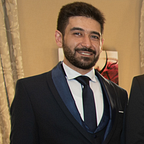What is a credible source?
Credible sources help keep my loved ones and me conscientious in a world rampant with misinformation and defensible against disinformation. But as an English Literature major, I can say that credible sources lend me credibility when I voice opinions, write blogs, conduct research, or prepare for conference meetings.
Despite the time I spend fact-checking myself, however, I know that immunity from an audience’s attitudinal judgments is a losing battle.
I recall a client of mine who needed me to market for new customers in the area of his Utah-based company. At one point, the leads started dropping like flies, and he persistently complained that my organization’s internal system was somehow to blame. I examined the data and generated reports showing that we weren’t shortening our end of the stick. It was simply a seasonal change that diverted user behavior away from his product. And, in time, things came around again. Throughout that moment in my career, however, he and I were on good terms. I backed up my word with facts and numbers while remaining true to the human dependencies which marked our relationship.
Whether it was the credible facts or human connection that persuaded him to be patient, for a time — I leave that to you.
What makes a source credible?
A paper published in the late ’70s titled “Credible Sources: Persuasive Facilitators or Persuasive Liabilities?” summated that credibility does not drive persuasion on its own; in fact, it is noninstrumental when it comes to rallying public perception. You can be wholly dependent on academic findings in delivering a message publicly but, to the extent that you do it without respect, empathy, and understanding as precedent, you will face resistance. The key takeaway is that a public figure’s perceived accuracy on an issue should never violate the public’s moral consensus, especially when the public figure only has a platform that resulted from that social — and ethical — contract.
The authors of said paper relay past findings, stating, “[It] has been observed that increasing the communicator’s attractiveness enhances positive attitude change”(Dholakia and Sternthal), where attractiveness is akin to relatability, empathy, and the volition in sharing moral grounds.
When should you question a source’s credibility?
Surgeon General, Vivek Murthy, published a report a few months back expressing his concerns on health “misinformation,” aiming to implement “product design and policy changes” for Big Tech companies, like Facebook, Twitter, and YouTube (Murthy). The report purported that sanctions need placing to impose penalties on account holders who violate a platform’s user policies to “slow the spread of misinformation,” explaining it as “information that is false, inaccurate, or misleading according to the best available evidence [. . .]” (“U.S. Surgeon General Issues Advisory”).
But the Office of the Surgeon General makes two mistakes here. The first is they fail to address the American people — the final recipients of the message and, secondly, attempt to substitute freedom of speech for public safety, which is a big ask from Americans who care about the First Amendment’s moral and ethical precedent.
As an English Literature major and anyone else who writes research papers will tell you, research demands attention and deep knowledge of a subject before a researcher, who is worth their salt, publishes their hypothesis. Research dictates that I question, test, evaluate, and review various theses before the final draft makes it to a journal publication with a byline that credits my authorship. I’ve discovered many times that the track I thought I carved out for myself was already etched by more sophisticated scholars or groups thereof, years before my handsome noggin caught up with the principles of peer-reviewed journals.
But that is ultimately what you and I hope for: that the fact-checkers would check their facts and internalize real-world information.
References
1. Dholakia, Ruby Roy, and Brian Sternthal. “Highly Credible Sources: Persuasive Facilitators or Persuasive Liabilities?” Journal of Consumer Research, vol. 3, no. 4, 1 Mar. 1977, pp. 223–32. doi:10.1086/208671.
2. United States, Congress, Office of the Surgeon General, and Vivek H. Murthy. Human Services, U.S. Public Health Service, 15 July 2021. www.hhs.gov/surgeongeneral/reports-and-publications/health-misinformation/index.html.
3. “U.S. Surgeon General Issues Advisory During COVID-19 Vaccination Push Warning American Public About Threat of Health Misinformation.” HHS.gov, U.S. Department of Health & Human Services, 15 July 2021, www.hhs.gov/about/news/2021/07/15/us-surgeon-general-issues-advisory-during-covid-19-vaccination-push-warning-american.html.
